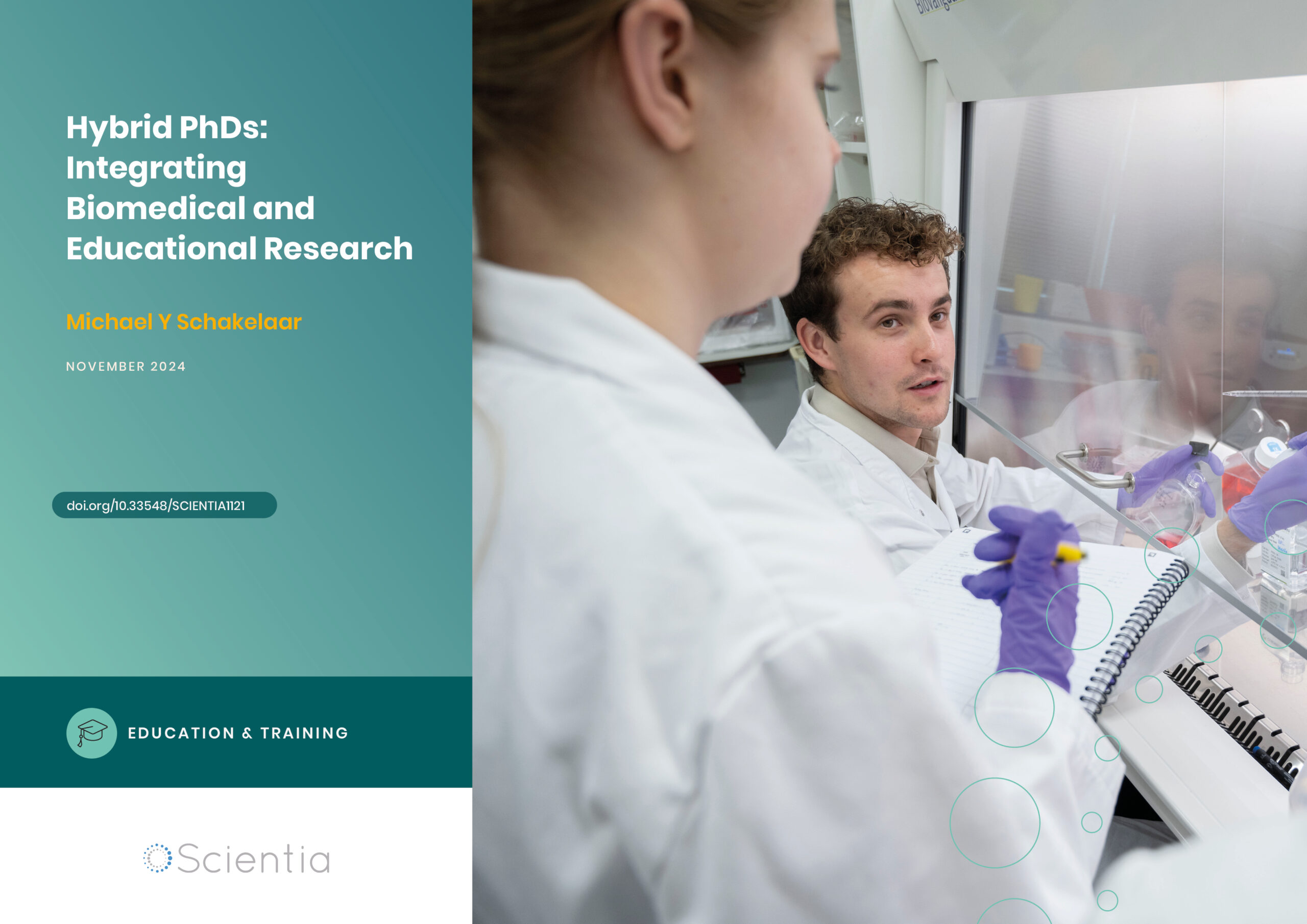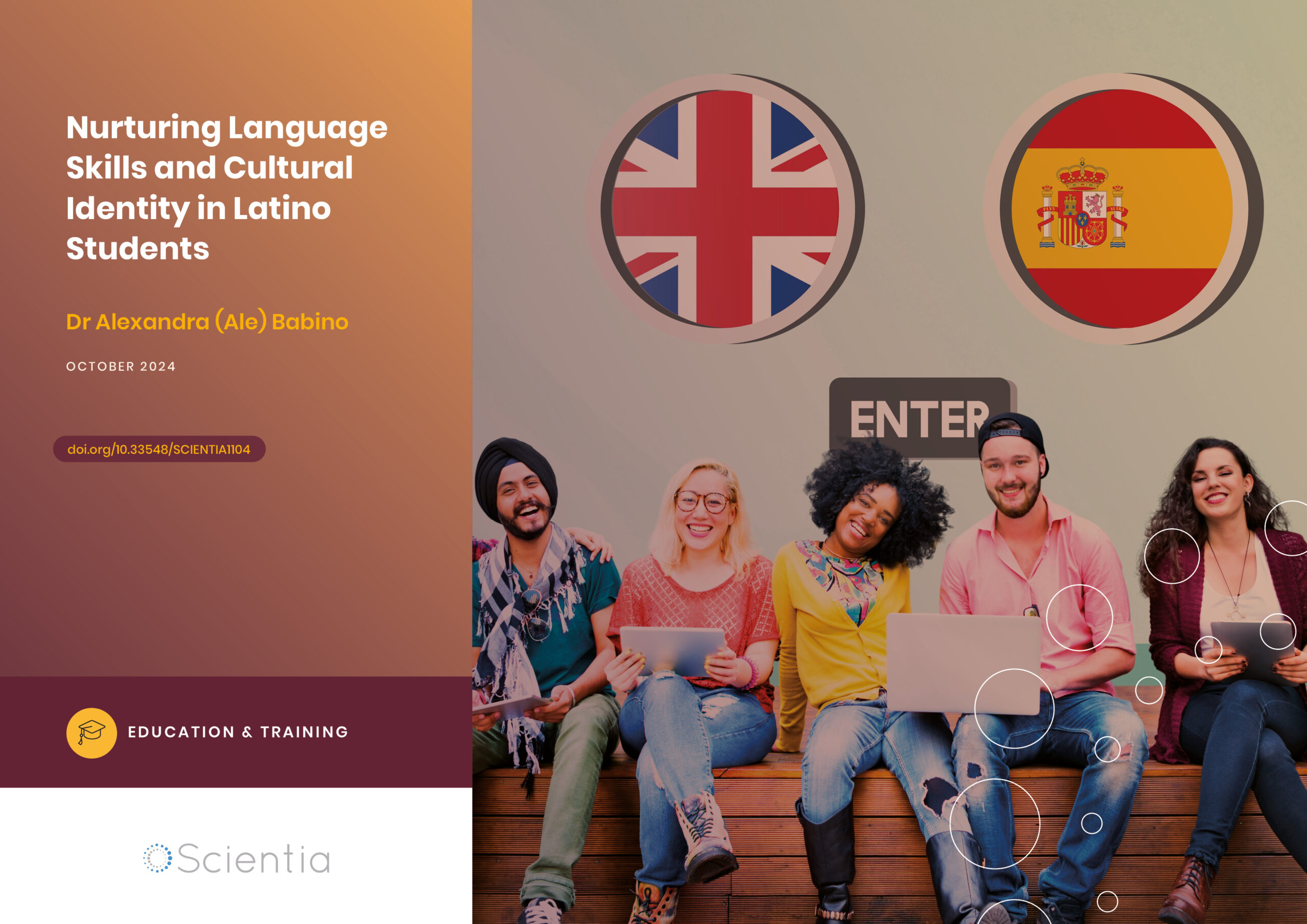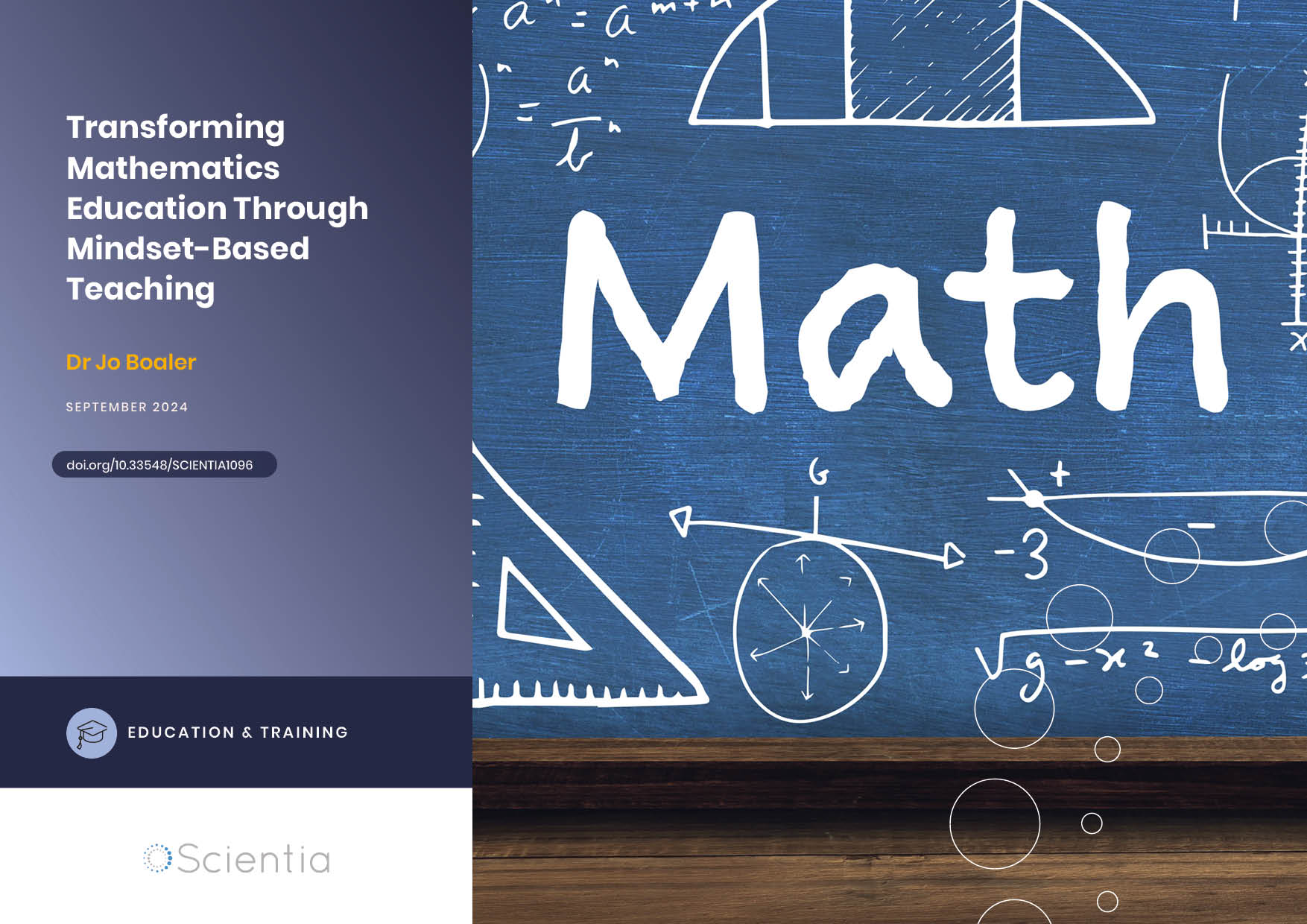Chelsea Morales | Shauntae M. St Clair – Aaniiih Nakoda College Offers Engaging STEM Learning Experiences
In recent years, many educators have been creating academic initiatives aimed at increasing diversity in Science, Technology, Engineering and Maths (STEM). Such programs aim to reduce the barriers faced by students from communities that are typically underrepresented in the STEM workforce. In addition to being more equitable, diverse workforces have been shown to be more innovative, as they bring together multiple experiences and perspectives. Chelsea Morales and Shauntae M. St Clair, two instructors at Aaniiih Nakoda College, are directing a program that creates unique, context-specific, and culturally relevant STEM learning opportunities for both high-school and college students from the American Indian Aaniinen and Nakoda tribes.
The Need for Diversity in STEM
Over the past few decades, technology and science have progressed at an increasingly rapid pace, opening up new opportunities for young generations graduating in STEM-related subjects. As the need for specialised STEM professionals grows, educators should ensure that they are attracting and training as many talented students as possible, ideally from a diversity of different cultural and social backgrounds.
A diverse STEM workforce would have numerous advantages, for instance ensuring that the needs and values of all segments of the population are taken into consideration when developing new technologies or when devising scientific theories. In addition, collaboration between scientists from different cultural backgrounds gives rise to richer and more innovative projects that integrate different ideas, types of knowledge, and practical approaches.
While some STEM initiatives have succeeded in engaging students from minority backgrounds or supporting them throughout their academic journey, many communities remain widely underrepresented in STEM. This includes American Indians, the indigenous people of North America who inhabited the continent for millennia prior to the arrival of European colonists.
In recent years, the US National Science Foundation (NSF) has started funding a growing number of programs aimed at increasing the engagement of young people from underrepresented minority groups, including American Indians, in STEM disciplines. This includes academic initiatives that consider the cultural values of specific communities to create unique and engaging learning experiences.
The Institutional Capacity Excellence in Tribal Colleges and Universities Program (ICE-TI) is one of the most recent NSF-funded initiatives aimed at diversifying the STEM landscape and increasing the engagement of American Indian students in science. One of the projects within the ICE-TI program is called Creating a continuum of integrated STEM learning experiences, which is directed and overseen by Chelsea Morales and Shauntae M. St Clair, two instructors at Aaniiih Nakoda College.

Aaniiih Nakoda College students Tobias Jones and Weslyn Schilling collecting plant biomass data at Gobabeb Namib Research Institute. From this, they can calculate the forage for livestock.
Creating a Continuum of Integrated STEM Learning Experiences
Aaniiih Nakoda College is located on the Fort Belknap Indian Reservation in the US state of Montana, and is governed by local tribes. The Fort Belknap reservation is inhabited by two American Indian tribes, namely the Aaniinen and Nakoda tribes. Currently, approximately 300 students are enrolled at the college, 91% of whom are American Indian.
In addition to teaching these students health and environmental science, Morales and St Clair have been directing the Creating a continuum of integrated STEM learning experiences project, which aims to create a variety of engaging educational experiences. ‘The project allows both high-school students and college students to engage in unique learning opportunities in STEM,’ says Morales. ‘It embraces both the Aaniiih and Nakoda cultural perspectives when evaluating the local environment.’
The project directed by Morales and St Clair has seven key components. These include intensive outreach efforts among high-school students, a summer seminar for pre-college students, first year undergraduate seminars, discipline-specific learning communities for STEM majors, summer field courses, and opportunities for the completion of a Bachelor’s degree in Ecology.
Improving the College Experience
The overarching goal of the ICE-TI grant is to create integrated learning experiences that will increase the participation of American Indian students in STEM, while also helping them to develop scientific skills and acquire new knowledge. As a result, while some of its components are designed to encourage high-school students to complete a STEM higher education course at Aaniiih Nakoda College, others focus on supporting these students throughout their academic journey.
‘This project is designed to identify a cohort of high-school students, through the ʔíítaanɔ́ɔ́nʔí/Tatága (the Aaniih and Nakoda names for Bison, respectively) Scholars Summer program, that would potentially become enrolled at Aaniiih Nakoda College,’ says Morales. ‘The grant not only works to recruit and engage students in STEM, but additionally to retain and support these students up through graduation and in pursuing a Bachelor’s at the college, which is also supported by the ICE-TI grant.’
Firstly, Morales, St Clair and their colleagues created outreach initiatives aimed at recruiting students from local high-schools who were interested in completing summer seminars in STEM-related subjects. During these summer seminars, the students were offered the opportunity to take part in engaging learning activities that reflected their cultural values, ultimately encouraging some of them to pursue a college degree in STEM.
‘Pre-college students who enrol at Aaniiih Nakoda College continue to be engaged as a cohort,’ says Morales. ‘This is firstly achieved through group advising, so that those pursuing the same degree could be in the same classes while pursuing their associates. Secondly, multiple student opportunities are made available through the grant, such as the First Year Seminar Milk River Watershed course, research internships, short elective course offerings, and a trip to Namibia.’
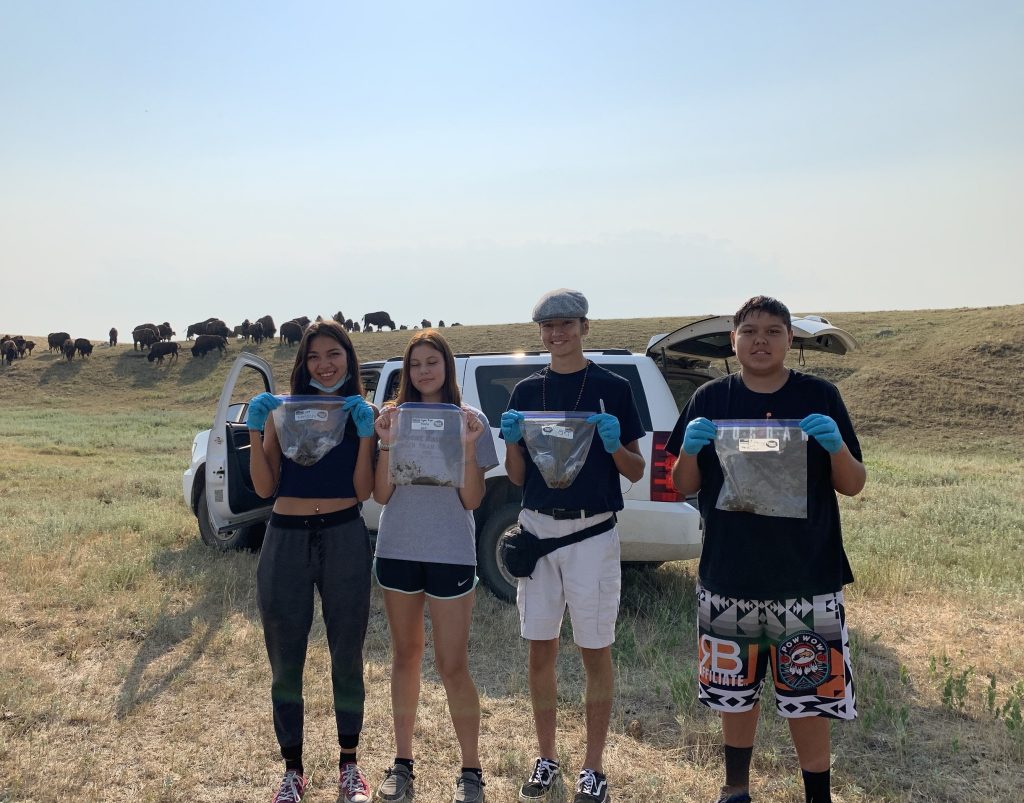
Aaniiih Nakoda College students. From left to right: Gracie Brockie, Mylah Rider, Titan Brockie, and Treyten Killeagle-Stiffarm at the People’s Creek Bison Range (which contains Bison from Yellowstone National Park) on the Fort Belknap Indian Reservation. Students have collected bison faeces to assess bison gut health by checking for presence of harmful parasite eggs
An Enriching Trip to Namibia
In addition to organising summer courses, seminars, and other learning activities on campus, the project offers students the opportunity to travel internationally and apply the knowledge they acquired in class during a trip to Namibia, in Southern Africa.
During their trip to Namibia, students conduct extensive environmental research, while also engaging with local communities and learning about their culture and values. Tribal communities are highly valued in Namibia and hold seats in the government, investing significant efforts on environmental conservation projects.
Similarly, the STEM courses offered at Aaniiih Nakoda College place a particular emphasis on preserving natural resources and working together with nature, rather than against it, incorporating many of the values of American Indian communities.
Most of the students who visited Namibia found it to be a highly valuable and enriching learning experience. They particularly appreciated their interactions with local indigenous communities and learning about their culture, values, and daily activities.
‘They showed us what they used to drink traditionally, plants they used for medicinal purposes,’ said Xavier Hawley, one of the students who attended the trip. ‘They lived off the land. Everything was treated with respect, like a lot of indigenous communities everywhere.’
A Promising Academic Endeavour
The outcomes of the project are currently being assessed by an external evaluator, Dr Deborah His Horse is Thunder. In the meantime, the researchers have gathered initial observations from instructors and feedback from participating students.
‘I have found there to be two major accomplishments of this ICE-TI grant,’ says Morales. ‘The first one speaks to the cohort design of the grant. This has successfully been achieved with our first cohort.’
Among the initial high-school students recruited by the project management team in 2017, three decided to enrol at Aaniiih Nakoda College after attending the summer seminars. They took part in all the project activities, attained an Associate degree in Environmental Science, and finally enrolled in the college’s first Bachelor’s program, called Bachelor of Science in Aaniiih Nakoda Ecology. These students are set to graduate in May of 2022.
‘This is a success, in that not only did the grant provide student support and learning but additionally provided a space for a group of students to support each other through their academic journey,’ says Morales. ‘The second major accomplishment of the grant is the fact that it is so diverse in the activities offered.’
In contrast with other academic initiatives aimed at increasing student engagement in STEM, the project offers a variety of activities that are also available to other students at Aaniiih Nakoda College who are not part of the program. This allows the researchers to offer academic support to a greater number of students with an interest in STEM, irrespective of what they are graduating in.
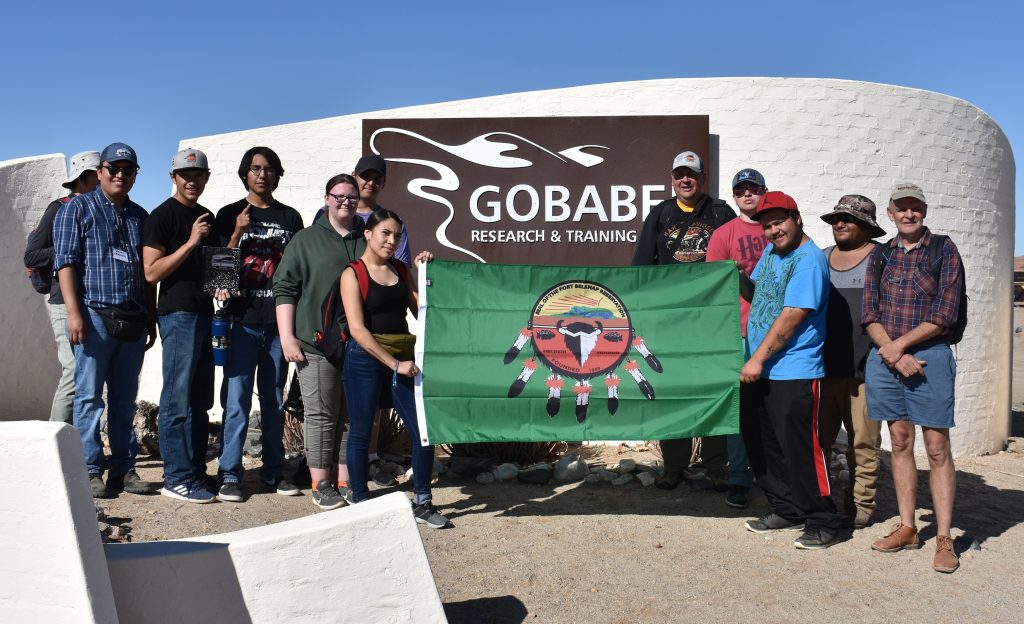
Aaniiih Nakoda College students and mentors. From left to right: Terron Gray, Adrian Kulbeck, Xavier Hawley, Makayla Renfro, Tobias Jones, Darrellyn Blackwolf, Dan Kinsey (ANC lnstructor), Tevin Messerly, Weslyn Schilling, Randall Werk (ANC instructor), John Pallett (Africa Site Coordinator) at the Gobabeb Namib Research Institute (Namibia, Africa). They are holding the Fort Belknap Indian Community tribal flag.
Making STEM More Engaging
So far, Creating a continuum of integrated STEM learning experiences has proved to be an impactful and effective project, encouraging many young people from the Aaniinen and Nakoda tribes to pursue an education in STEM. The project evaluation conducted by Dr His Horse is Thunder will provide further insight about the impacts on participating students, particularly in terms of their attitudes towards STEM, their motivation to pursue a career in science, their skills, and their academic achievements.
Over the past decade, Aaniiih Nakoda College has received several other NSF grants and has been involved in multiple academic initiatives aimed at increasing the engagement of American Indian Students in STEM. Since 2020, the tribally controlled college also offers a Bachelor of Science degree in Aaniiih Nakoda Ecology, which teaches students environmental science integrating American Indian indigenous values.
Collectively, these unique academic efforts could help to introduce a broader range of perspectives and values into STEM-related fields, creating a richer workforce that will be better equipped to tackle the scientific and environmental challenges facing society.
SHARE
DOWNLOAD E-BOOK
REFERENCE
https://doi.org/10.33548/SCIENTIA796
MEET THE RESEARCHERS

Chelsea Morales
Health Science Instructor
Aaniiih Nakoda College
Harlem, MT
USA
Chelsea Morales has served as a health science instructor at Aaniiih Nakoda College for the past six years. She holds a BS in Biological Sciences and an MS in Pharmaceutical Sciences from University of Montana. Before she started working at Aaniiih Nakoda College, she was an academic coordinator for North Central Montana (TRiO) Upward Bound, a college readiness program for low-income high school students, on the Fort Belknap Indian Community. Currently, Morales teaches several courses, including Anatomy and Physiology, Basic Human Nutrition, Medical Terminology, Ecological Health, and Bioethics. She also manages two other grants awarded by the NSF’s Tribal Colleges and Universities Program (TCUP), which aims to increase student engagement in STEM.
CONTACT
E: ctmorales@ancollege.edu
W: https://www.linkedin.com/in/chelsea-morales-52987184

Shauntae M. St Clair
Environmental Science Instructor
Aaniiih Nakoda College
Harlem, MT
USA
Shauntae M. St Clair is an Environmental Science Instructor at Aaniiih Nakoda College. She holds an AS in Environmental Science from Aaniiih Nakoda College, as well as a BS in Biology from Montana State University. Before she started teaching, she worked as a research intern at different colleges in Montana. At Aaniiih Nakoda College, she currently teaches Chemistry, Environmental Science, Intro to Aaniiih Nakoda Ecology, Intro to Organic/Biochemistry, Principles of Living Systems, and Soil Science. She is also the co-director of two ongoing research grants awarded by the NSF and the American Indian College Fund.
CONTACT
FUNDING
National Science Foundation (NSF), Tribal Colleges and Universities Program (TCUP).
Institutional Capacity Excellence in TCUP Institutions (ICE-TI) grant award 1660424.

REPUBLISH OUR ARTICLES
We encourage all formats of sharing and republishing of our articles. Whether you want to host on your website, publication or blog, we welcome this. Find out more
Creative Commons Licence (CC BY 4.0)
This work is licensed under a Creative Commons Attribution 4.0 International License. 
What does this mean?
Share: You can copy and redistribute the material in any medium or format
Adapt: You can change, and build upon the material for any purpose, even commercially.
Credit: You must give appropriate credit, provide a link to the license, and indicate if changes were made.
SUBSCRIBE NOW
Follow Us
MORE ARTICLES YOU MAY LIKE
Michael Y Schakelaar | Hybrid PhDs: Integrating Biomedical and Educational Research
Biomedical science-based PhDs are often research-focused, designed to hone a candidate’s expertise in a specific field. However, subsequent careers in university settings frequently entail substantial teaching responsibilities, with PhD graduates unprepared for the dual roles of researcher and educator. Hybrid PhDs aim to better equip graduates for academic careers by integrating highly specialised scientific knowledge with educational research. PhD candidate Michael Y Schakelaar of University Medical Center Utrecht (Utrecht University), The Netherlands, provides an outstanding example of how this can be achieved.
Dr Alexandra Babino | Bilingual Education: Nurturing Language Skills and Cultural Identity in Latino Students
Bilingual education programmes aim to help students develop proficiency in multiple languages while learning grade-level content. However, the reality is often more complex, especially for Latino students navigating between Spanish and English in the USA. Dr Alexandra Babino from Texas Woman’s University explores how these students develop their language skills and identities in bilingual educational settings. Her research provides valuable insights to help educators nurture students’ multilingual abilities and cultural connections.
Dr Jo Boaler | Transforming Mathematics Education Through Mindset-Based Teaching
Mathematics education in the United States has long struggled with issues of underachievement and inequity. Despite decades of reform efforts, many students continue to struggle with math, developing negative attitudes and beliefs about their own mathematical abilities. However, recent research into mindset and brain plasticity offers promising new directions for transforming how mathematics is taught and learned. A groundbreaking study led by Dr Jo Boaler at Stanford University demonstrates how a ‘mathematical mindset’ approach to teaching can dramatically improve student achievement and engagement, even in just a few weeks of instruction.
Dr Kimberly Coy | Virtual Schooling: How Digital Education Can Increase Inclusivity
Virtual schooling – teaching conducted entirely online – has become increasingly important since the COVID-19 pandemic. Even prior to the pandemic, virtual schools were recognised for providing alternatives to students with needs beyond those catered for in traditional classroom settings. While research into the factors influencing the success of virtual schools is lacking, Dr Kimberly Coy of California State University, Fresno, is working to address this knowledge gap. She is particularly interested in the challenges facing the application of digital learning and strategies that may overcome these.


